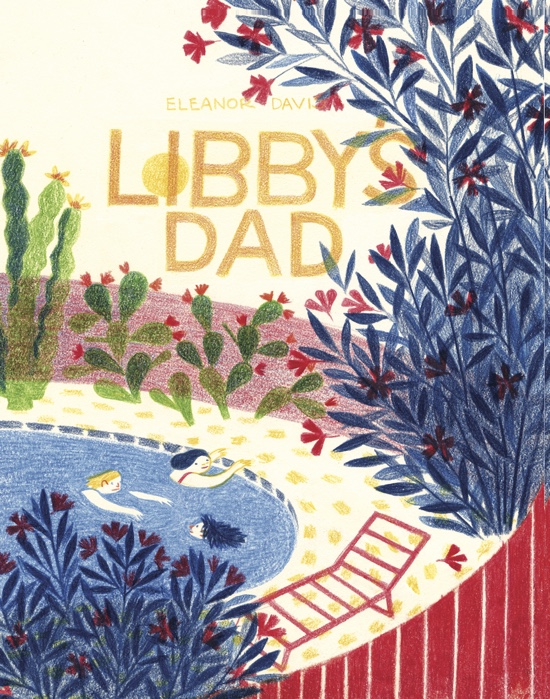This column is somewhat overdue. Can I blame the voluminous nature of the books reviewed here? Not entirely, perhaps, but there has been some exceptional work released recently, and frequently in the form of thick graphic novels, adding substantially to reading time. The sheer quality of the books I’ve seen recently is encouraging, as are the production values, making these a pleasure to hold as well as read.
The comics festival season is underway once again, and ELCAF starting today and running this weekend (June 16 – 18) looks set to be this month’s highlight with great talent from the UK and worldwide at the Round Chapel in Hackney.
Small Press Day is also back on 8 July at comic shops across the country. This was excellent last year, and details can be found on the Small Press Day Twitter feed.
Gareth Brookes – A Thousand Coloured Castles
(Myriad)
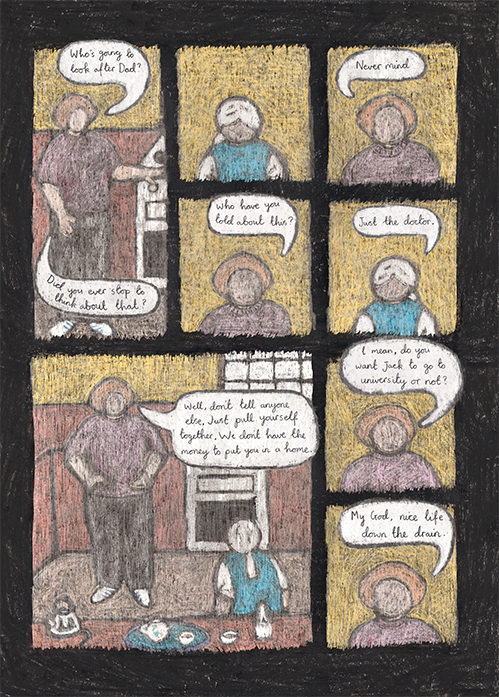
Gareth Brookes A Thousand Coloured Castles is a strikingly original and beautiful book. Somebody at Myriad clearly agrees, as this is the first hardback I’ve seen from them, and the printing is excellent. Myriam is a classical unreliable narrator, a woman experiencing vivid, childlike hallucinations that lead her husband Fred and adult daughter to suspect that she is losing her mind. She sees a boy next door that she thinks is imprisoned there, but of course she’s not believed. Fred is exactly the “no funny business” sort who is disinclined to respond well to his wife’s condition. He is a well-observed suburban retiree who can’t imagine why anyone wouldn’t have the time to keep their lawn immaculately mowed, with a sense of nostalgia based on how things have changed for the worse, without any corresponding desire to make things better. For example, he reminisces about a time when everyone knew each other in the area, but doesn’t take the opportunity to introduce himself to new neighbours when they move in.
In a recent Broken Frontier interview Brookes talks about how he experimented with a technique remembered from primary school: coloured crayons, shaded over with black then scraped off again revealing the colour underneath. It’s a surprisingly effective technique that makes this book distinctive. The imprecision of the crayon artwork is profoundly sympathetic to the subject matter, with the lack of facial detail producing a distancing effect, and the childlike solidity of the drawings precisely conveying the vivid hallucinations. It gives similar pleasures to Sam Alden’s pencil work, the effect of seeing what’s on the page yet knowing we are not seeing everything there is to see, and is genuinely distinctive.
The combination of narrative uncertainty, genuinely dark musings about what lies behind a suburban facade, childlike art and convincing characters is inspired. A Thousand Coloured Castles is a perfect synthesis of form and content, and is an essential purchase. Pete Redrup
Gabrielle Bell – Everything Is Flammable
(Uncivilized)
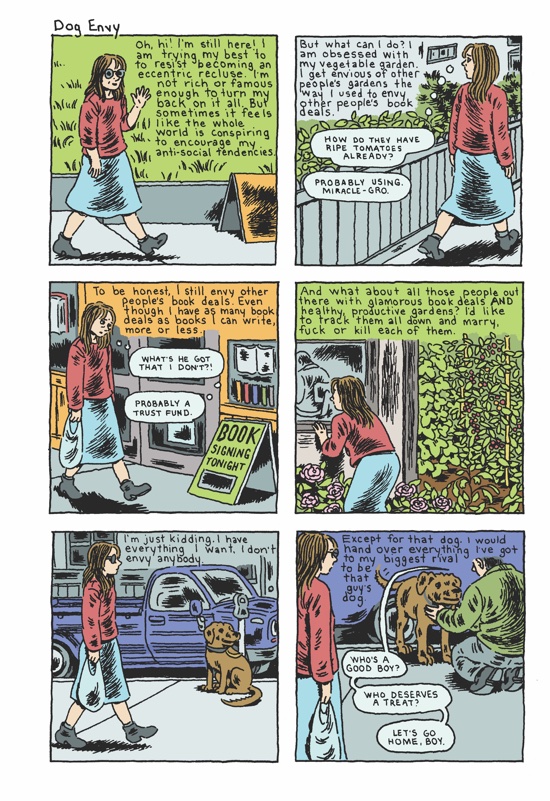
Everything Is Flammable, Gabrielle Bell’s latest, begins in her usual diary format with a few days of her life in Brooklyn, full of the events and insights that characterise her work, until she is interrupted by a call to let her know her mother’s home has been destroyed in a fire. What follows has a tighter focus than her last book, as it recounts the events of the next year as she tries to help her mother. This provides an opportunity to reflect on her familial relationships and also to explore her childhood, the unconventional nature of which has previously been mentioned, although not in such detail.
One theme that crops up a few times is the tension Bell feels between being the daughter she wants to be and being the autobiographical cartoonist constantly looking for material to write about. Such musings are interspersed with interludes about the many cats and cat deaths of her childhood, or the financially precarious life she has chosen for herself. This is the most revealing book she has published so far. Although she is always frank about herself and her life, by delving into her past and her family present in such an honest way, it feels like we are seeing a few layers deeper into her personality. What this book also reveals is just how talented Bell is. It’s a confidently structured book, the clear narrative not derailed by the many digressions, and full of sharp insights expressed with warmth and her self-deprecating wit.
One might assume that an artist who has mostly produced autobiographical work for many years would have little left to reveal. Everything Is Flammable convincingly refutes this notion, reminding us once again that nobody does this better than Gabrielle Bell. Pete Redrup
Joe Decie – Collecting Sticks
(Jonathan Cape)
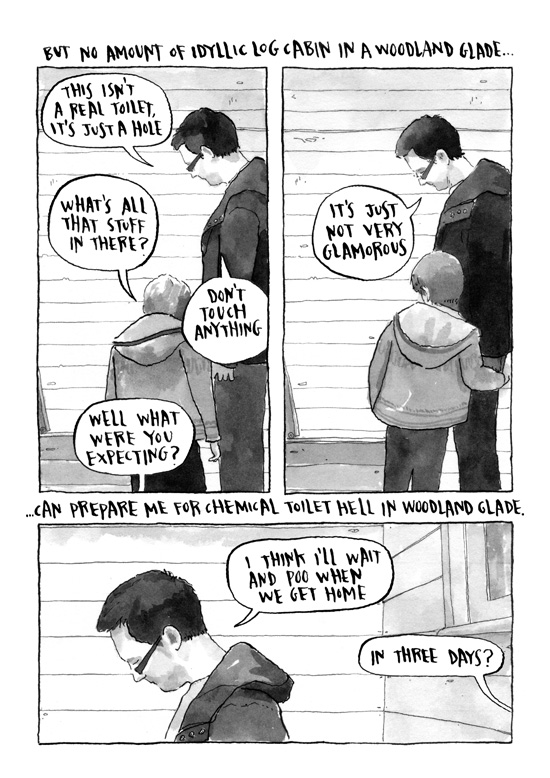
Joe Decie’s Collecting Sticks is about a family holiday during which many sticks are collected. If you aren’t especially interested in sticks, don’t be put off – there’s plenty of ineptitude as well. The book begins with a short prologue recounting two unsuccessful camping trips, followed by a second prologue about a more recent holiday, also combining tents with dissatisfaction. Having skilfully established the level of anti-camping feeling his wife holds, a further such vacation is mooted before a counter offer of glamping is made and decisively booked. Decie depicts himself as somewhat maladroit while his spouse is wise, competent and decisive, and this underpins much of the book.
Decie’s work has a curious rhythm, the titles and the dialogue often working differently, ebbing and flowing at different paces. Pages fairly consistently end with a punchline, and the overall effect is funny and entertaining. Panel sizes vary depending on what they depict, which works well with the appealing ink washed greys of the artwork as well as adding a further dimension to the pacing. Something about the art reminds me of the photo stories in 80s teen magazines. I think it’s the poses as much as anything else. His lettering is excellent, and very distinctive.
Collecting Sticks is very well observed. Decie conveys the family dynamic persuasively, and the book will ring true to curators of small children. It’s a quick read, with a dry sense of humour, and well worth checking out. Pete Redrup
Eleanor Davis – Libby’s Dad
(Retrofit)
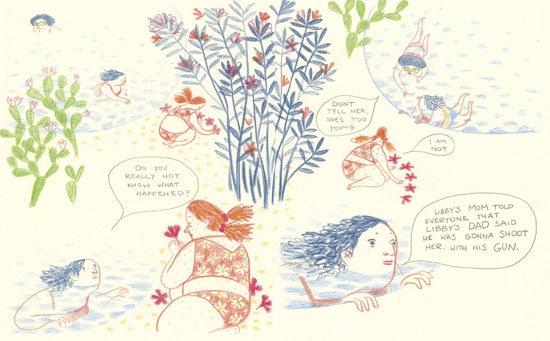
The last Eleanor Davis comic I read was her superb entry in the Frontier series, BDSM. This looks very different, swapping out black and white art for coloured pencils and adult film actors for schoolgirls, yet is clearly the work of the same artist. The depiction of body language is very accomplished – for all the simplicity of the character drawings, the physicality totally convinces. A playful sense of colour composition is evident here. Although the palette is broader at the start and end, the middle of the book takes place in a darkened bedroom and is rendered in a striking red, white and blue. With a star patterned duvet, a full page shot of a gun and red liquid spilled on the floor, it’s hard not to reflect on American values.
The events, such as they are, take place at Libby’s house, at a pool party and sleepover for five girls. Her parents recently divorced, and the hot gossip for her friends is that Libby’s mum has reportedly claimed that her ex-husband threatened to shoot her.
This would be easy to spoil with a detailed review, not because there’s some huge plot twist or dramatic ending to reveal, but because Davis is an immensely subtle storyteller, and this is a short comic that is best left to do its own work. It is an excellent, distinctive book with believable characters, sympathetic and downright gorgeous art beautifully printed, and breathing space for the reader to reflect. Libby’s Dad is worth both your time and your money. Pete Redrup
Jillian Tamaki – Boundless
(Drawn & Quarterly)
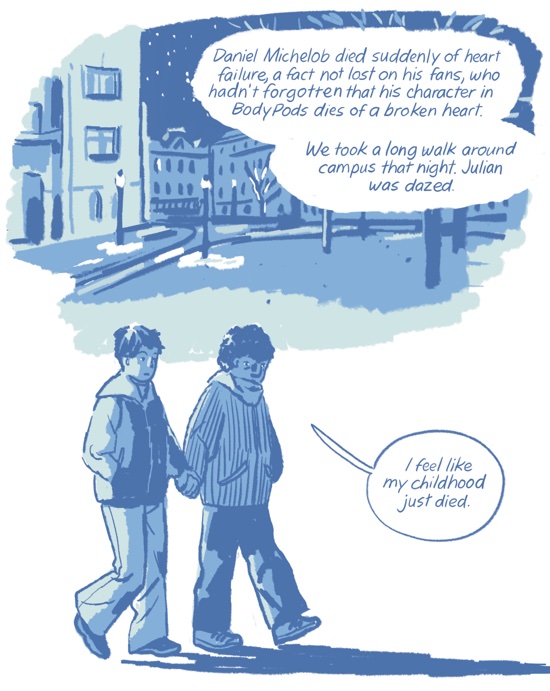
It’s been a while since we’ve had a new Jillian Tamaki book, so this is certainly welcome. Boundless collects some of her shorter pieces, a number of which were first published online on Hazlitt.net. Sandwiched between a couple of pretty abstract side-on strips of double page single images is a varied collection of consistently excellent short stories with a focus on our cultural past, especially internet culture.
This book is worth buying for SexCoven alone, the exceptional piece published as Frontier 7, a skilful blend of internet legend and hippy cult. Recounting a youth craze that burns brightly before fading away to reveal the truly committed, huddling together in the desert in a commune squabbling over petty differences but delighted that the ‘jocks and teen queens’ have moved on to something else. However, that’s not to suggest for a minute that the rest aren’t of a similar standard. 1.Jenny, for example, explores the way we can get drawn into digital life to the exclusion of real life, posing questions about the extent to which it matters if the people we follow are real, and about how real our own online profiles are. Her ideas are first and foremost packaged in captivating narratives that entertain and engage readers in equal measure and leave us musing on what they say about our own lives.
These stories are each very different, but consistently richly thought-provoking, full of both cultural insight and believable characterisation. With fluid, expressive art, the images are sometimes laid out in a conventional grid but often unbordered, taking full advantage of the size of the page. This book serves as an excellent reminder of exactly why Tamaki is so highly regarded, and comes highly recommended. Pete Redrup
Rozi Hathaway – Cosmos & Other Stories
(Good Comics)
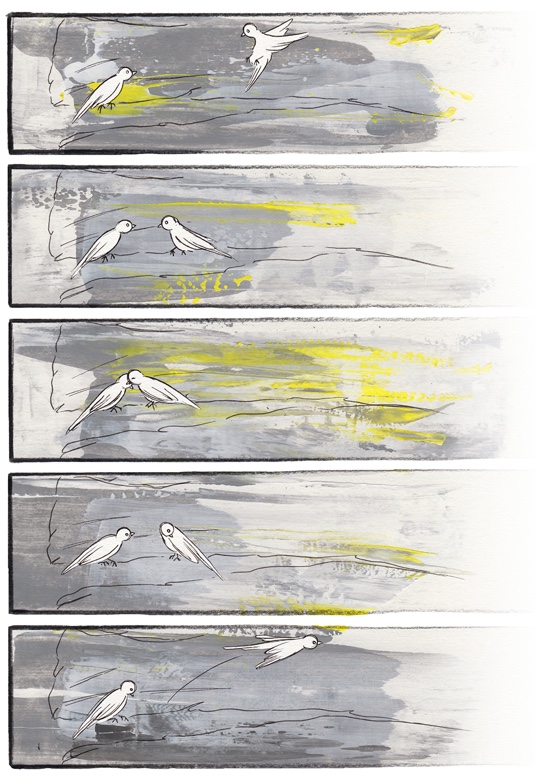
After releasing several short comics herself, Rozi Hathaway has teamed up with the aptly named Good Comics to publish her first collection, Cosmos & Other Stories. A slim and beautifully printed collection, this includes one piece we’ve seen before (Sørgedag, which first appeared in Dirty Rotten Comics 8 and makes its colour debut here) while the rest are new.
All the Hathaway visual trademarks are present – a thin, fluid line, frequent use of wide but shallow panels, bold but sparing colour used to striking effect, and a minimal approach to dialogue. Her characters rarely make eye contact with the reader, more commonly casting their gaze down as they reflect inwards. Her work is frequently melancholy, with loneliness a common theme, yet not without hopefulness in many stories. Characters are always alone, often yearning for others. In one story a man reassures his father that his life and work in a large city are going well, although his downcast eyes suggest the truth is different. This cognitive dissonance between words and images is skilfully established through the visual tone.
This book shows how Hathaway is developing as an artist. There’s a clear consistency despite differences in panels, lettering styles and colour. One particularly effective technique is the way she follows a densely panelled double page spread with a single two page image overleaf. This somehow opens up the stories, creating a hopeful, positive tone regardless of what has been established before. Cosmos & Other Stories is a beautiful book by a considerable talent. Pete Redrup
Paolo Bacilieri – Fun
(SelfMadeHero)
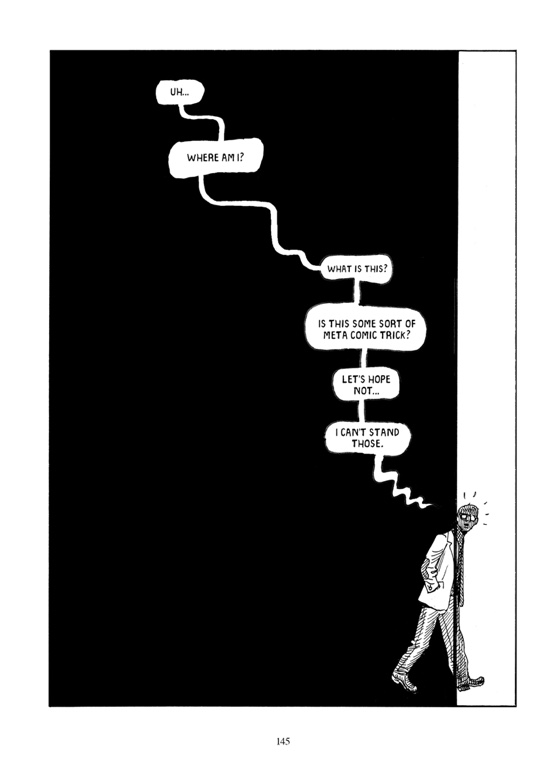
My first thoughts on opening Fun were, "Wow, this guy has too much time on his hands." The level of detail in Bacilieri’s renderings of 1913 New York (and as we go on, many other cities and times) is mind boggling, but as it is multiplied, bisected, reduced artfully in the following pages into a pure graphic crossword grid, I saw the trade-off. In these sections of the book, the ornate vertices of the urban architecture form artful counterpoint to the gridded intersections of narrative, told at one point DOWN the page to mirror the movement of an elevator, or ACROSS to show the character’s thought process, cannily creating the visual language of the book. At other times we are invited to follow parallel snatches of narrative across (or down, I suppose… whatever you feel like, okay?) the page. Fun’s intersecting modes of art tell parallel stories, the meaning of which are possibly meant to swim into focus, although not all do. The central two carry the structure of the book – in one we read an account of the international history of the crossword puzzle, which we see being written as prose by the character of Pippo Quester alongside those insanely detailed cityscapes. In the second, and in a more graphic and experimental style, we see the day to day life of Bacilieri’s long running character Zeno Porno who is helping Quester research his book, and lending his comics expertise as a point of comparison to the crossword puzzle. Other modes of narrative dance around these two central strands, the “crossfiction” conceit for example, in which the stories of strangers collide without connection takes a while to come into focus, slowly building a total brick of a book as cunningly created and disjointed as a crossword puzzle.
Crosswords, like comics, privilege the serious and avid reader, and similarly both gain accessibility and lose a certain value in the age of Google. I’ve never been much of a one for crosswords, or for the kind of comic book fandom that requires encyclopaedic knowledge; while this book requires neither inclination of its reader to casually enjoy the work, it may be necessary to do it justice. This work could easily prompt theses, and I wish I had the time to really plumb the depths of its complexity, to use both avid reading and probably copious Googling to figure out exactly what is going on here. Or maybe there are not meant to be answers. Either way I very much enjoyed learning about crosswords and admiring the visual wizardry of the page design. As to the numerous cross-fiction interludes and characters, I can’t decide if I would have preferred the book without them; maybe I need to read it again. Jenny Robins

